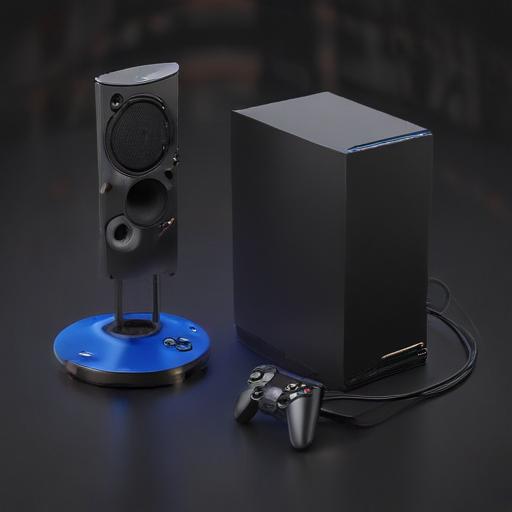PlayStation 6 and New Sony Handheld Reportedly Target Mid-2027 Launch Window, With Focus on Price and Efficiency
With the PS5 Pro still fresh on shelves, early details about Sony’s next console cycle are beginning to surface. A new report based on older AMD documentation and more recent planning materials points to two devices under development for the next generation: a flagship console codenamed Orion and a companion handheld codenamed Canis. While everything remains subject to change, the documentation suggests Sony is prioritizing affordability and broad compatibility alongside performance.
Key points at a glance
– Sony is expected to continue using AMD silicon for its next-gen lineup, following earlier reporting and the companies’ recently announced Project Amethyst collaboration on AI upscaling.
– Orion (PS6) is rumored to emphasize efficiency and cost control while still delivering a significant performance uplift and full backward compatibility with PS4 and PS5.
– Canis (handheld) appears aimed at delivering console-adjacent performance in a highly portable form factor, also with PS4/PS5 backward compatibility and a modern connectivity setup.
– Both devices are tentatively targeting a mid-2027 to early-2028 release window.
Rumored Orion (PS6) targets
– Thermal/power: ~160W total board power target, pointing to a focus on efficiency and cooling design that won’t dramatically increase size or noise.
– CPU/GPU: 8 Zen 6 (or later) CPU cores paired with 40–48 RDNA 5 compute units running up to ~3GHz.
– Memory: 160-bit or 192-bit bus with GDDR7, reportedly aiming up to 32 GT/s data rates.
– Performance: Approximately triple the PS5’s rasterization performance.
– Compatibility: Backwards compatible with PS4 and PS5.
– Timing: Indicative specs suggest mid-2027 to early-2028.
Rumored Canis (PS6-era handheld) targets
– Thermal/power: ~15W total board power target, in line with modern efficient handhelds.
– CPU/GPU: 4 Zen 6c cores with 12–20 RDNA 5 compute units at roughly 1.6–2.0GHz.
– Memory: 128-bit LPDDR5X-7500+.
– Performance: Around half the PS5’s rasterization capability.
– Features and I/O: Touchscreen, USB-C with video out, and backward compatibility with PS4 and PS5.
– Form factor: Documentation suggests Sony could deliver a device even smaller than the Nintendo Switch if desired.
– Timing: Targeting the same window as the home console.
What this could mean
– Pricing first: The documentation and planning context indicate Sony is highly sensitive to price this cycle. Expect a more measured performance jump, with a stronger reliance on modern techniques like AI upscaling to deliver premium visual targets at reasonable cost and power.
– A smaller leap from PS5 Pro: If these targets hold, the gap from PS5 Pro to PS6 may be narrower than the jump from PS5 to PS5 Pro. That could make AI-driven reconstruction, frame generation, and smarter rendering pipelines a centerpiece of next-gen experiences.
– Upscaling becomes core strategy: Project Amethyst underscores that advanced AI upscaling is likely integral to both devices. This approach can raise resolution and frame rates while keeping power and cost in check—especially useful for a handheld with console-level aspirations.
– Strong ecosystem continuity: Backward compatibility across two prior generations would mean an immediate library and smooth transition for players and developers, lowering risk and strengthening value on day one.
– Handheld synergy: A dockable, full-featured handheld with USB-C video out would complement the home console, offering flexible play without giving up much on image quality—especially if AI upscaling is tuned for mobile power budgets.
Practical expectations and caveats
– Plans evolve: These specifications originate from earlier AMD/Sony planning and more recent documents, but hardware targets can shift before final silicon. Clock speeds, compute counts, memory configurations, and industrial design may change.
– Launch timing: Mid-2027 is plausible on the traditional cadence, but supply chain dynamics, competitive moves, and software readiness can push dates.
– Heat and acoustics: The rumored power targets suggest Sony wants quieter, cooler hardware without a massive chassis, which would be a welcome quality-of-life improvement.
Why a pricing focus is logical
– Component costs and energy efficiency have become core to design, not afterthoughts. By emphasizing upscaling and smarter rendering, Sony can deliver next-gen experiences while keeping the box affordable and the handheld compact.
– A price in line with current PS5 levels would lower the barrier to entry, growing the install base more quickly and encouraging developers to lean into next-gen features earlier.
Hopeful outlook
– If these plans hold, players could see a more accessible jump to next-gen, with richer visuals and higher frame rates made possible by AI-assisted rendering rather than brute-force silicon alone. The combination of a capable home console and a versatile handheld—both tapping into a massive existing library—could broaden how and where flagship PlayStation games are played.
Summary
– Next-gen PlayStation console (Orion) and handheld (Canis) are reportedly targeting mid-2027 to early-2028.
– Sony is expected to stay with AMD, leveraging Project Amethyst for AI upscaling.
– Orion: ~160W, 8 Zen 6 cores, 40–48 RDNA 5 CUs, GDDR7 on 160/192-bit bus, ~3x PS5 rasterization, PS4/PS5 backward compatibility.
– Canis: ~15W, 4 Zen 6c cores, 12–20 RDNA 5 CUs, LPDDR5X-7500+, ~half PS5 rasterization, touchscreen, USB-C video out, PS4/PS5 backward compatibility, potentially smaller than Switch.
– Strategy centers on price, efficiency, and robust upscaling to deliver noticeable gains without ballooning costs.
